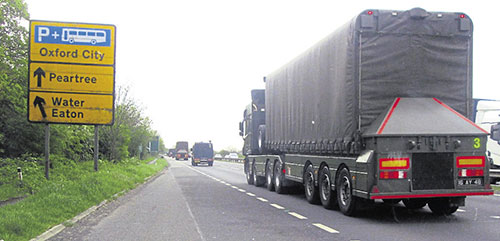
The maximum number of nuclear bombs held by Britain is to rise from 180 to 260 warheads, the British government announced on 16 March.
According to analysis by Nukewatch, Britain’s nuclear arsenal had already risen to around 250 warheads by the end of last year (see 'Warhead movements' below).
The chair of the Scottish Campaign for Nuclear Disarmament (CND), Lynn Jamieson, reacted to the decision: ‘What neo-colonial delusions and swaggering machismo goes from building “a better Britain” to investment in more nuclear weapons – good for agonising mass death and poisoning for all living things but nothing else.’
Trident Ploughshares (TP), the direct action campaign against Britain’s nuclear weapons, argued that the 40 percent increase broke Article VI of the Nuclear Non-Proliferation Treaty (NPT) – which the UK signed and ratified in 1968.
Article VI of the NPT says signatories will ‘pursue negotiations in good faith on effective measures relating to cessation of the nuclear arms race at an early date and to nuclear disarmament.’ Increasing the UK’s stock of nuclear bombs by more than a third is not a sign of ‘good faith’, TP argues.
A Trident Ploughshares letter to the British prime minister warned that the 40 percent increase also ‘provides an excuse’ for other nuclear-armed states to make their own ‘disastrous contribution[s]’ to the nuclear arms race.
Their letter to Boris Johnson ended with this question: ‘How does the United Kingdom intend to present and defend the decision to increase its stockpile cap in the context of negotiations at the upcoming NPT Review Conference?’
TP pointed out that the increase gives an excuse for non-nuclear weapon states to decide that the NPT is finished as a treaty, and ‘to develop nuclear weapons of their own accordingly’.
The general secretary of UK CND, Kate Hudson, condemned the government’s ‘irresponsible and potentially disastrous approach’. She said: ‘This is no time to start a new nuclear arms race. As the world wrestles with the pandemic and climate chaos, it beggars belief that our government is opting to increase Britain’s nuclear arsenal.’
Hudson went on: ‘Last month, presidents Biden and Putin agreed to further reduce their nuclear arsenals by renewing the New START Treaty. Johnson should not be increasing ours. With the government strapped for cash, we don’t need grandiose, money-wasting spending on weapons of mass destruction. We need essential investment in health, jobs and dealing with the climate catastrophe.’
Quality and quantity
Nukewatch believes that the increased British stockpile is made up of new, more dangerous and more accurate warheads.
Each Trident missile can carry up to eight warheads, which it releases in the upper atmosphere. Each warhead then re-enters the atmosphere and can guide itself to a separate target.
The ‘re-entry vehicle’ is a cone-shaped body that protects the nuclear bomb inside the warhead from the heat of re-entry and also guides the bomb to its target. The latest US version for Trident, the Mk4A re-entry vehicle, is not only much more accurate than before, it also has a ‘smart fuze’ that can time the nuclear detonation in such a way that the warhead has a much better chance of destroying its target.
It is generally believed that the Mk4A Trident warhead has a much better chance of destroying a ‘hardened’ target such as a missile silo or a deeply-buried command bunker.
This makes Trident even more of a destabilising First Strike weapon, which could be used in a disarming First Strike that theoretically robs an enemy of any chance of nuclear retaliation.
Nukewatch believes that, from 2015 onwards, the ministry of defence has gradually been switching over its Trident stockpile to the more lethal Mk4A warheads.
Nukewatch writes: ‘The Mk4A warhead, with its new arming, fusing, and firing system, provides increased targeting capabilities, making the warhead more accurate and more effective against hardened targets. This would broaden the range of targets that can be held at risk and perhaps allow the same number of targets to be destroyed with fewer warheads, since multiple warheads would no longer need to be assigned to critical hard target locations.’
-----------------------
Warhead movements
According to Nukewatch, there was a ‘slow but steady’ fall in the number of warheads in the UK warhead stockpile (in line with government policy announcements) from 2010 until 2015. Then numbers started rising instead – with sharp increases in the last two years.
Nukewatch is able to estimate warhead numbers because it tracks the convoys which carry nuclear warheads around on Britain’s roads.
Warheads are taken from AWE Burghfield in Berkshire, England, (where they are assembled) to RNAD Coulport in Argyll and Bute, Scotland (where they are stored).
Coulport is where the warheads are fitted onto rented US Trident missiles carried on British Trident submarines.
Convoys also take warheads from Coulport back to Burghfield for maintenance or dismantling.
Because Nukewatch can tell the difference between convoys which are carrying warheads and ones without them, they are able to tell how many warheads are delivered to Coulport in a year and how many are taken away.
Because they have been tracking warhead convoys for over 30 years, Nukewatch can also estimate how the number of Trident warheads in Coulport has changed over the years. (Other factors go into the calculation, including other kinds of convoys.)
From a likely figure of 225 Trident warheads in 2010, Nukewatch’s best estimate is that the stockpile rose by 25 warheads over the course of the decade.
This means that by the end of 2020, there were probably already 250 British Trident warheads, close to the limit now being announced by the British government.
There are some uncertainties in the Nukewatch estimate. They say that the UK stockpile could contain between 241 and 305 Trident warheads. Their best estimate is 250.

